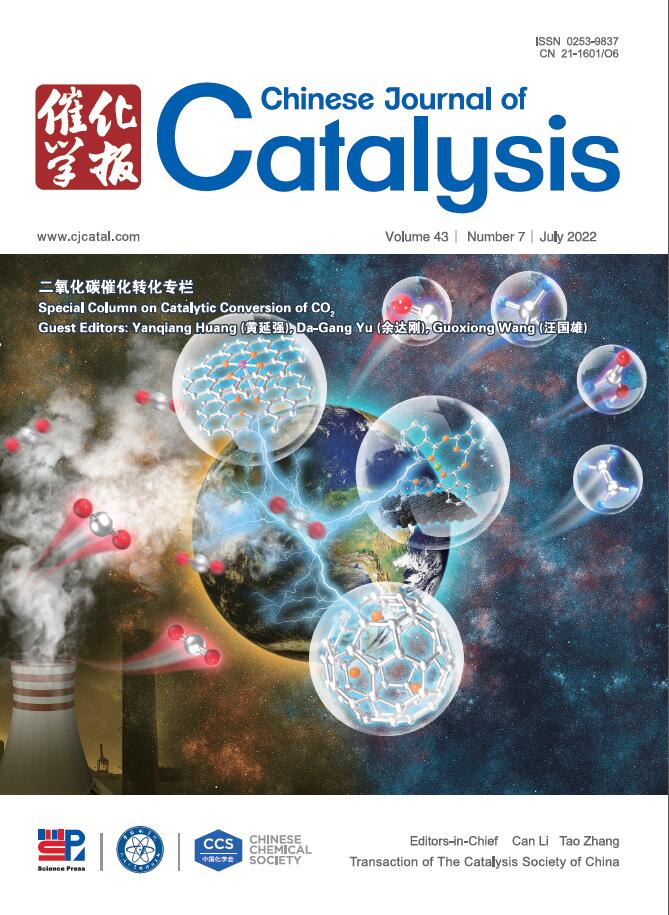Mo-doping and CoOx loading over BiVO4 photoanode for enhancing performance of H2O2 synthesis and in-situ organic pollutant degradation
IF 15.7
1区 化学
Q1 CHEMISTRY, APPLIED
引用次数: 0
Abstract
The combination of photoelectrochemical water oxidation hydrogen peroxide (H2O2) on the anode and hydrogen evolution on the cathode increase the value of the water splitting process. However, the sluggish water oxidation kinetics and slow carrier transport limit the generation of H2O2. In this study, to promote H2O2 production, the surface of a Mo doped BiVO4 photoanode was modified with CoOx co-catalyst. The resulting CoOx/Mo-BiVO4 photoanode generates H2O2 at a rate of 0.39 μmol min−1 cm−2 with a selectivity of 76.9% at 1.7 VRHE. The experimental results indicate that CoOx decorated on Mo-BiVO4 kinetically favors the H2O2 production via reduced band bending, while inhibiting H2O2 decomposition. According to density functional theory calculations, the loading of CoOx enhances the efficiency of the Mo-BiVO4 photoanode in generating H2O2. Moreover, the in-situ generated H2O2 through CoOx/Mo-BiVO4 was applied to the degradation of tetracycline in aqueous solution, finding that CoOx/Mo-BiVO4 exhibits the best performance among the catalysts evaluated. This work demonstrates that the CoOx co-catalyst can effectively facilitate the water oxidation to H2O2, opening a way for its application in situ water remediation.
求助全文
约1分钟内获得全文
求助全文
来源期刊

Chinese Journal of Catalysis
工程技术-工程:化工
CiteScore
25.80
自引率
10.30%
发文量
235
审稿时长
1.2 months
期刊介绍:
The journal covers a broad scope, encompassing new trends in catalysis for applications in energy production, environmental protection, and the preparation of materials, petroleum chemicals, and fine chemicals. It explores the scientific foundation for preparing and activating catalysts of commercial interest, emphasizing representative models.The focus includes spectroscopic methods for structural characterization, especially in situ techniques, as well as new theoretical methods with practical impact in catalysis and catalytic reactions.The journal delves into the relationship between homogeneous and heterogeneous catalysis and includes theoretical studies on the structure and reactivity of catalysts.Additionally, contributions on photocatalysis, biocatalysis, surface science, and catalysis-related chemical kinetics are welcomed.
 求助内容:
求助内容: 应助结果提醒方式:
应助结果提醒方式:


